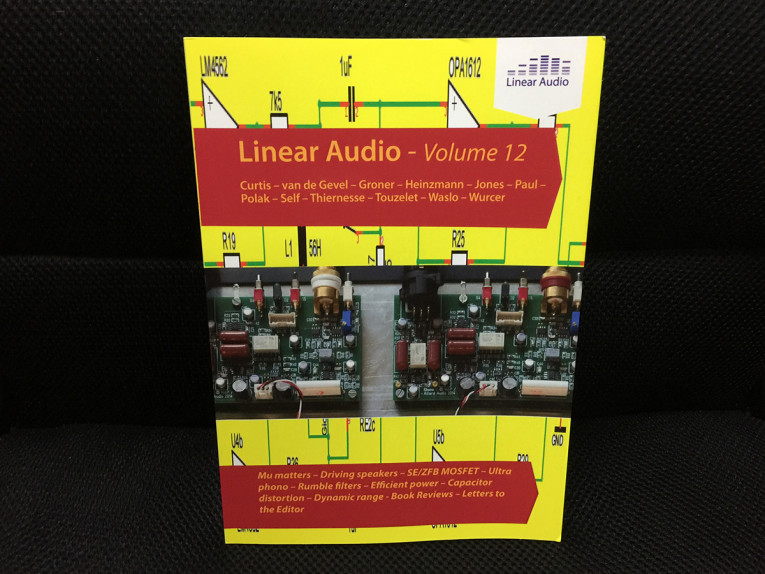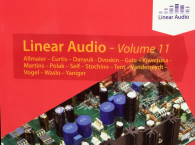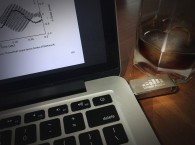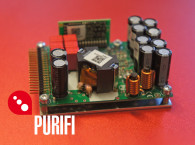
This new Linear Audio vol 12 opens with some words from Jan Didden himself, reflecting on the ongoing attempts to test for audibility of Hi-res audio. After all, Jan is also audioXpress’ technical editor and that’s a topic we’ve discussing frequently as well.
For this second 2016 edition of Linear Audio, there’s a Tutorial from another frequent AX contributor, Christopher Paul. In this edition, Paul asks “So What’s Mu with You?” and comes up with a set of insightful equations, schematics and parameters. Mu Followers and Mu Stages have been available to the audio community for some time. Various resources associated with these circuits are available on the web and elsewhere. They offer descriptions (some accurate, some not) of how the circuits operate. You can also find some basic design guidelines. But there is one thing that is scarce to non-existent: a set of equations and schematics which can help you to intuitively understand and design the circuit, and to reverse engineer a completed design by turning its component values into a set of useful performance parameters. The main purpose of this article is to present the means to analyze, understand and design these circuits.
Next up, from Pierre Touzelet, Linear Audio’s resident mathematician, thought long and hard on driving methods for loudspeaker systems and came up with relative merits of one method over another. As he states, on one side, we have those supporting, with good arguments, voltage drive and, on the other side, those supporting current drive, with also good but different arguments, both parties fighting each other without any hope to find a reasonable final Gentlemen’s Agreement. The objective of this article is an attempt to reconcile the two positions by proposing an answer based on an objective analysis of the different available drive methods. The analysis allows an estimation of the merits of each method according to their respective advantages and drawbacks.
This edition also features a circuit design article from Bill Waslo trying to approach Something Different: “The Spring” SE Class-A ZGNFB MOSFET Amplifier, zero nfb and single-ended / class A. This amplifier design is, as the American expression says, “well off the beaten path”. It does not use a global feedback loop. It is a single-ended design, operating in class-A with output voltage swing beyond its supply voltage. It has reasonable power efficiency (for an SE class-A amp, at least) while drawing a constant current from the power supply. It is a relatively simple design, has low output impedance and low harmonic distortion.
The following article, from Vincent Thiernesse will be especially appreciated by regular audioXpress readers. This edition of Linear Audio includes the complete text from Thiernesse explaining how he designed his ”Ecological Power Supply for Power Amplifiers,” a project included in audioXpress June 2016. In this extensive article, Vincent Thiernesse, describes the design, development, technical, and theoretical background for his efficient, unity power-factor, low cost audio power amp supply, using sine wave current absorption and inherently good power factor.
Next, Douglas Self decided it was time for Rumble filtering – like you really mean it. This article deals with audio power amplifier power supplies with sine wave current absorption, showing all the benefits these offer for audio systems, these benefits being inherently good power factor providing low RMS current, low harmonic pollution, low transformer over-dimensioning and good form-factor of the output current allowing smaller capacitor values and lower output impedance. Although this is not the purpose of the article, these supplies have obvious ecological benefits as well.
Hans Polak made an attempt to design a non plus ultra Phono-Preamp that could hold its own with the best without having to mortgage the farm. As he explains, there are not that many falling in the category extremely good, and if we may believe Stereophile, there are only a few standing high above all others, all costing a small fortune. In this article his target is to compete with the best of the best in terms of sound, a very ambitious goal indeed.
On Test and Measurement, Samuel Groner teamed up with Scott Wurcer for a their “Quadrature Bridge Measures Harmonic Distortion in Capacitors” article, considering the measurement of harmonic distortion in capacitors using a bridge circuit. Measurement results for various capacitor types are presented. These show that parts with ceramic C0G dielectric have more consistency, and generally speaking also lower, distortion than Polyester, Polypropylene or Polystyrene film capacitors.
Finally, in Linear Audio Vol 12, you can read Stan Curtis’s article wondering “What’s with all this dynamic range?” and explaining some valuable insights. There’s also a book review by Hans Polak of Esa Merilaäinen’s “Current-Driving of Loudspeakers”, while Morgan Jones reviews Horowitz and Hill’s “The Art of Electronics,” 3rd Ed. and finds it probably the most significant analogue electronics book published this decade. And as always, there are Letters to the Editor and follow-ups to previously published articles.
Linear Audio is sold on-line through www.linearaudio.net






